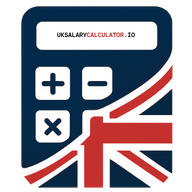
Your Guide to UK Income Tax Bands & Rates for 2025/2026
October 10, 2025
The UK income tax system can feel complex, but understanding it is the first step to smart financial planning. For the tax year running from 6th April 2025 to 5th April 2026, the tax bands and rates determine how much of your hard-earned money goes to HMRC. This guide breaks it all down, with clear examples for England, Northern Ireland, Wales, and Scotland.
What is the Personal Allowance?
Everyone in the UK is entitled to a Personal Allowance, which is the amount of income you can earn each year before you start paying Income Tax. For the 2025/2026 tax year, the standard Personal Allowance remains at £12,570.
This means if you earn £12,570 or less, you typically pay no income tax. If you earn more, you only pay tax on the amount above this threshold. However, there's a catch for high earners.
The Personal Allowance Taper
If your 'adjusted net income' (your total taxable income before any personal allowances and less certain tax reliefs) is over £100,000, your Personal Allowance is reduced. It goes down by £1 for every £2 that your income is over the £100,000 limit.
This means your Personal Allowance becomes zero if your income reaches £125,140. This creates an effective 60% tax rate on income between £100,000 and £125,140, as you're paying 40% tax on the income itself, plus losing your tax-free allowance on that slice of earnings.
UK Income Tax Rates and Bands 2025/26
For England, Wales, and Northern Ireland, there are three main tax bands that apply to income earned above your Personal Allowance.
Try the Interactive Tax Calculator
Enter your salary to see how it's taxed under different schemes.
Tax Breakdown
£12,570
£37,430
(Tax: £14,972.00)
Net Income (After Tax)
£35,028.00
Total Income Tax
£14,972.00
Tax-Free Allowance
£12,570
| Band | Taxable Income | Tax Rate |
|---|---|---|
| Basic Rate | £1 to £37,700 | 20% |
| Higher Rate | £37,701 to £125,140 | 40% |
| Additional Rate | Over £125,140 | 45% |
Note: The income ranges shown are for taxable income, i.e., after the Personal Allowance has been deducted.
Scottish Income Tax Rates and Bands 2025/26
Scotland has devolved power over income tax and uses a different set of bands and rates. The same Personal Allowance of £12,570 applies, but the bands above it are more granular.
| Band | Taxable Income | Tax Rate |
|---|---|---|
| Starter Rate | £12,571 - £14,876 | 19% |
| Basic Rate | £14,877 - £26,561 | 20% |
| Intermediate Rate | £26,562 - £43,662 | 21% |
| Higher Rate | £43,663 - £75,000 | 42% |
| Advanced Rate | £75,001 - £125,140 | 45% |
| Top Rate | Over £125,140 | 48% |
The different bands mean that for the same salary, a resident in Scotland may pay a different amount of income tax compared to someone in the rest of the UK. This is why it's crucial to select the 'Resident in Scotland' option in our take home pay calculator for an accurate result.
How It All Works: An Example
Let's say you live in England and earn £60,000 per year.
- Personal Allowance: The first £12,570 is tax-free.
- Basic Rate Tax: You pay 20% on the portion of your income between £12,571 and £50,270. That's £37,700 taxed at 20%, which is £7,540.
- Higher Rate Tax: You pay 40% on the portion of your income between £50,271 and £60,000. That's £9,730 taxed at 40%, which is £3,892.
- Total Income Tax: Your total tax bill for the year would be £7,540 + £3,892 = £11,432.
This example doesn't include National Insurance, pension contributions, or student loans, all of which our main calculator handles to give you a complete picture of your take-home pay.
